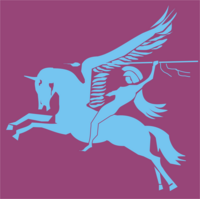| 8th (Midlands) Parachute Battalion | |
|---|---|
 Cap badge of the Parachute Regiment | |
| Active | 1942–1947 |
| Country | |
| Branch | |
| Type | Airborne forces |
| Role | Parachute infantry |
| Size | Battalion |
| Part of | 3rd Parachute Brigade |
| Nickname(s) | Red Devils[1] |
| Motto(s) | Utrinque Paratus (Latin "Ready for Anything") |
| Commanders | |
| Notable commanders | Alastair Pearson DSO**, MC John Hackett DSO |
| Insignia | |
| The emblem of the Second World War British Airborne Forces, Bellerophon riding the flying horse Pegasus |  |
The 8th (Midlands) Parachute Battalion was an airborne infantry battalion of the Parachute Regiment, raised by the British Army during the Second World War. The battalion was created in late 1942 by the conversion of the 13th Battalion, Royal Warwickshire Regiment to parachute duties. The battalion was assigned to the 3rd Parachute Brigade, serving alongside the 7th (later replaced by the 1st Canadian Parachute Battalion) and 9th Parachute battalions, in the 1st Airborne Division before being reassigned to help form the 6th Airborne Division in May 1943.
The 8th Parachute Battalion fought in Operation Tonga, the British airborne landings in France on D-Day, the Normandy Campaign, and the break out to the River Seine. Withdrawn to England in September 1944, the German winter offensive known as the Battle of the Bulge saw the battalion return to the continent. Their final mission during the war was the River Rhine crossing, followed by the advance to the Baltic.
After the war the battalion was sent to Palestine with the 6th Airborne Division until January 1948, when it was amalgamated with the 9th (Eastern and Home Counties) Parachute Battalion (which had served alongside the 8th in 3rd Para Brigade) to form the 8th/9th Parachute Battalion.
- ^ Otway, p.88